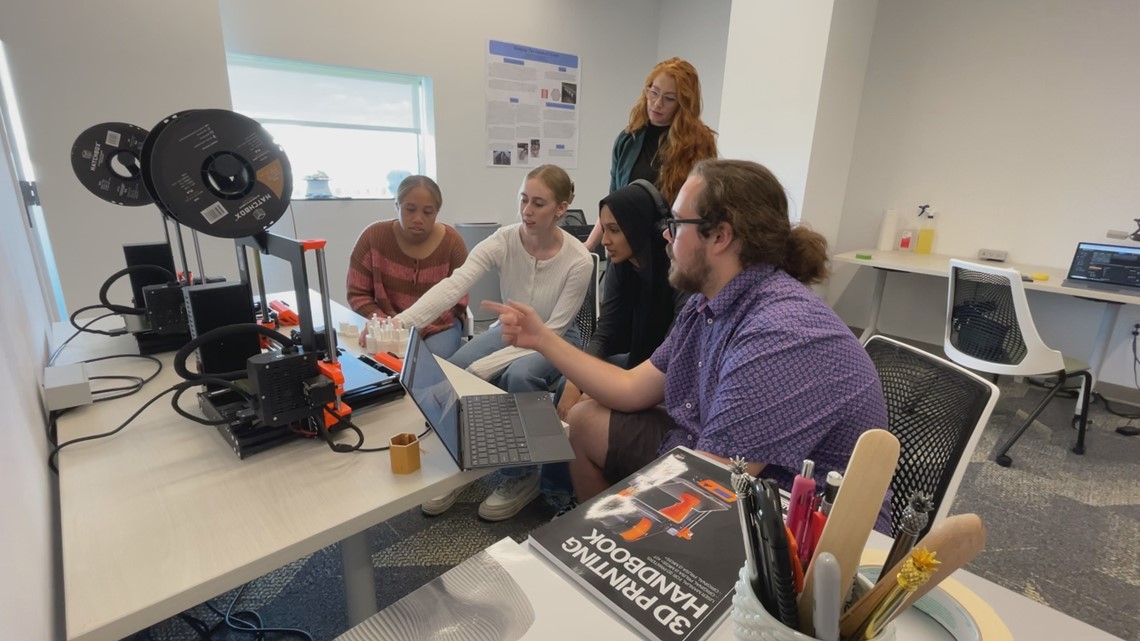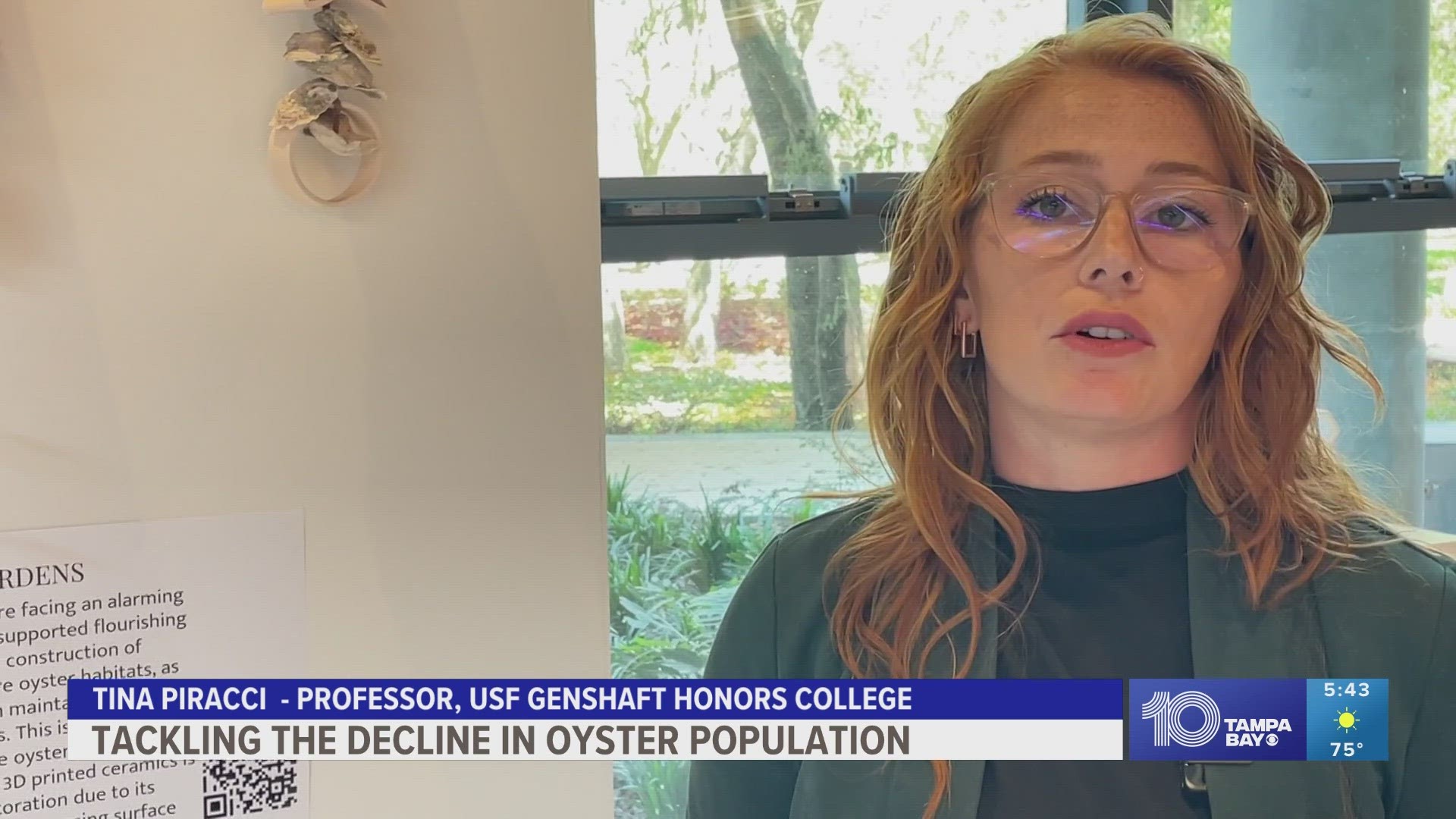TAMPA, Fla. — They provide food, protection from storms and even help filter our water but oyster reefs in the Gulf of Mexico and beyond are declining at an alarming rate. Disease, pollution and even vinyl seawall construction all are taking a toll.
However, efforts to save and repopulate the invaluable organisms are underway, including in classrooms at the University of South Florida.
“We're facing a huge decline in oyster populations, about 85%. With that getting so low, we're wiping out entire communities,” says Tina Piracci, a professor at USF’s Judy Genshaft Honors College.
Piracci and Biology & Ecology professor Dr. William Ellis teach a collaborative course where students combine art and STEM to try and turn the tide for oysters in the Gulf.
“We have to come up with solutions that are at least starting to engage that problem, something that's scalable, and something that communities can get involved with through citizen science,” Piracci added.
With science, calculations and 3-D clay printers, students have been designing those very solutions, they call them “oyster bricks.”
“I've designed a brick structure called 'infinity bricks' right now that uses principles of looping and diagonal interlocking. And this will be a strong structure to hold oysters alongside seawalls,” first-year student Lauren Scotch said.


“These are something that could be easily accessible to people, that people could put out in their dock and it can help improve water quality around where they live,” second-year student Naja Daye explained.
The oyster bricks keep sustainability in mind, made of clay they produce no waste, but plenty of room for oyster larvae to thrive.
“It allows for oysters to seed into it and let them grow, but also strong enough to withstand a hurricane and all the fun things that come in the Bay Area,” honors student Ian Blair-Catala said.
They are works of art with a practical purpose and a scientific process that takes continuous research.


“It's been a lot of like, three steps forward and two steps back with the design process sometimes to really perfect it, but to see it actually come into like reality after a year of work. It's unbelievably exciting,” Blair-Catala added.
And you can help their effort; the team of students is currently looking for homes in St. Petersburg whose residents may be interested in having the oyster habitats placed in the water on their properties. They are hoping to gather data and secure further grant funding to expand their project.
Interested individuals can find out more info and fill out this form.

